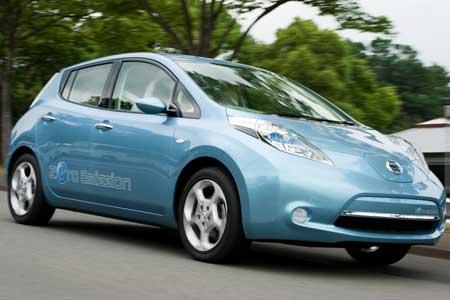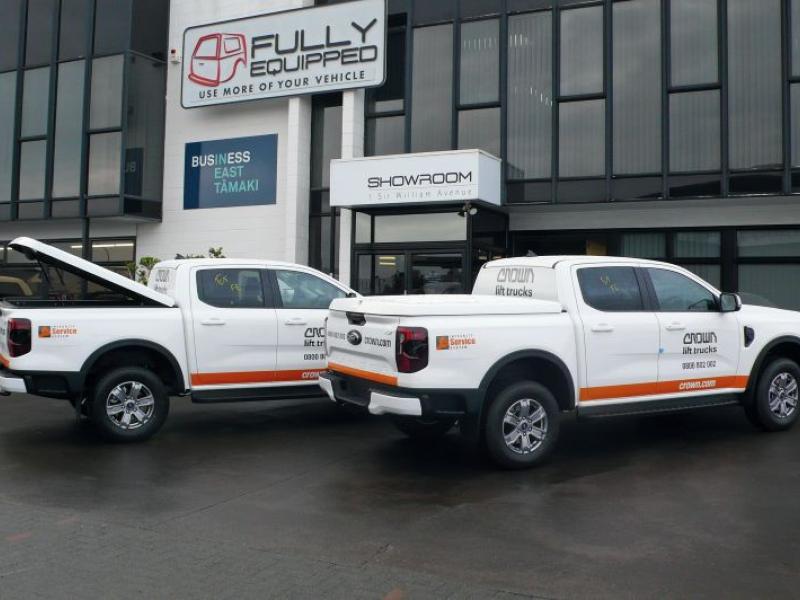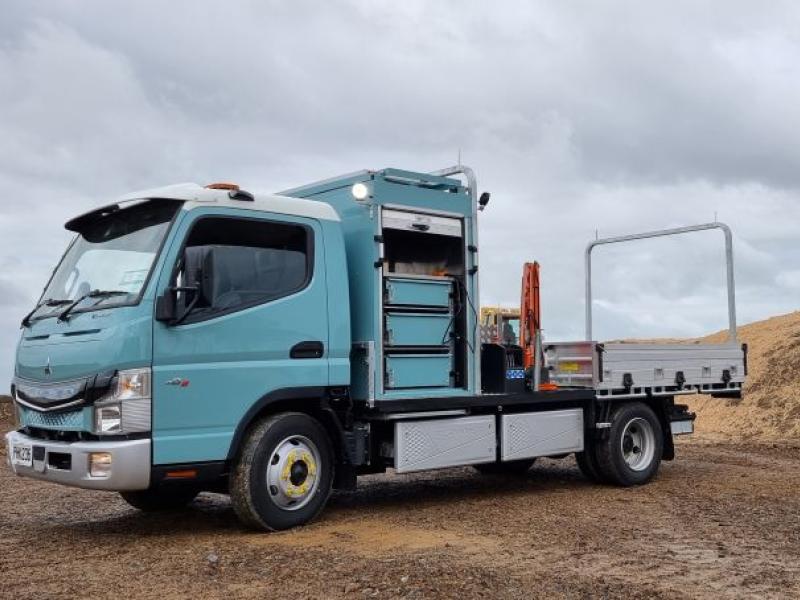| Robert Barry reviews the technical, economic and political landscape that has shaped green fleet policy since 2007 - and offers some insight into future policy decisions. In April 2007 I wrote my first sustainable fleet feature for this magazine. This was prior to the global financial crisis (GFC) and there were many options for fleets to consider improving environmental performance: through vehicle selection, servicing and maintenance, driver education and travel planning. Naturally some of this added cost to the business in the short term but the long term view was that it would reduce a fleet’s carbon footprint and greenhouse gas emissions once the policy and green mindset had been well established At this time we also reported upon the changes occurring within the car and light commercial vehicle manufacturers themselves. For example the Nissan Motor Company released the Nissan Green Programme 2010 which was focussed on three core areas in its vehicle production: * Reducing C02 emissions * Reducing exhaust gas emissions * Accelerating recycling efforts At the time Nissan reported that it wanted to launch a Nissan electric vehicle early in the next decade (which it has fulfilled with the all-electric Nissan Leaf), accelerate the development of plug-in hybrids, and enhance petrol engine technologies with its variable valve event and lift system (VEL). Nissan said in 2007 that VEL reduced C02 emissions by 10 percent and would feature in all models from 2007 onwards in Japan and North America. Nissan also said that its engines were compatible with E10 fuel as this blend of 10 percent bio fuel with petrol was widely available at the pump in the North American market. As we all know after 2007 came the GFC of 2008 and all of a sudden being green flew out the window and making financial decisions that ensured the survival of the company came to the fore. Dealing to an inefficient and costly fleet was the first cab on the rank for many companies both small and large. As Mitchel Booth NZ general manager of GE Capital–Custom Fleet has previously said in these pages “you should never let a good recession go by,” and many companies took the opportunity to trim unnecessary vehicles out of their fleets and also to reduce the size of their engines. Large six-cylinder cars were the first casualties of the GFC on vehicle policy. Certainly since 2008 the large car landscape has changed in New Zealand, although the VE Holden Commodore introduced in 2006 continues to sell well. To its credit Holden has improved the VE series II model with increasingly efficient engine technology. Direct injection, six-speed automatic transmissions and cylinder deactivation technology has made its way into their engines as well as the ability for them to run on E85 blended fuels. Strangely though of late the SUV market has been very buoyant and we think that many people who may in the past have bought a Falcon or Commodore for the fleet or family are now going to mid and large size all-wheel-drive SUV instead. We think their logic is that they want a multi-purpose all-wheel-drive vehicle that offers room inside, a commanding driving position, and good towing ability. Fuel economy and emissions, however, are less of a consideration. Fuel choice and drive train technologies Diversity of energy and fuel choice will become increasingly important in the next decade as fleets choose the option that best suits their needs and as fuel prices creep up towards the $3 a litre mark. Bio-fuel compatible vehicles, petrol-electric hybrids, diesel-electric hybrids, plug-in hybrids, battery electric vehicles as well as natural gas and LPG powered vehicles will offer fleets alternatives to the familiar petrol and diesel options. In my opinion while hydrogen technology is being successfully trialled in Europe, Japan and North America by many of the large manufacturers, it is too expensive a technology to be seriously considered for the New Zealand fleet. The actual costs of the vehicle and the infrastructure to set up the refuelling technology will be too prohibitive for our small car park. But that doesn’t mean New Zealand fleets shouldn’t consider all the available options, not only to be seen as “green” but also to best maximise fitness for the purpose at hand. Locally relatively stable petrol prices during the past 12-18 months and the Government’s disincentive to introduce a fairer and more equitable road user charges system for passenger vehicles has in my opinion stifled the sale of diesel vehicles as a greener alternative. Why diesel cars can’t pay tax at the pump is quite frankly utter nonsense. The argument for a flat rate excise tax over a distance-based rate would see an equitable share between the light and heavy sectors – those who use and consume more diesel fuel would pay more tax. However the Government seems to steadfastly refuse to change its mindset and retains the distance-based calculation, possibly for fear of losing valuable revenue which in the current economic climate it can ill afford to do. Fortunately it’s not all bad news as the advent of some highly efficient small capacity turbocharged direct-injection petrol engines, found in products such as the Volkswagen and Skoda range of passenger cars, and now appearing in Holden and Ford vehicles, means the fuel efficiency gap between petrol and diesel technology is also closing rapidly. On that note it is interesting that in the last year the Skoda brand in particular changed its vehicle line-up from an all-diesel fleet to now include the smaller petrol engine models in the Fabia, Octavia and Superb models, reacting to the overall market demand to offer a greater choice of fuel options. The real benefit of the smaller capacity turbo-charged petrol engines is not only higher fuel efficiency with fewer emissions but also that these small engines can be used instead of large ones in larger car applications, and this is particularly well illustrated by the 1.8-litre Skoda Superb. Here is a Commodore/Falcon sized vehicle that offers the same four-cylinder economy as smaller mid-sized vehicles but gives large car performance thanks to its intelligent seven-speed dual clutch transmission. A case of “you can have your cake and eat it too”. In an article for the May 2011 issue of our sister publication Motor Equipment News called “Mazda ups the IC Ante” journalist and engineer Brian Cowan wrote that Mazda is also currently working on extracting the maximum performance and fuel efficiency from both petrol and diesel engines as part of its SkyActiv technology drive. Cowan says the SkyActiv engines claim impressive credentials. For the 2-litre petrol version these include around 15 percent better fuel economy than the current MZR 2.0 (making the engine competitive with leading diesels), plus 15 percent better low- and mid-range torque. According to Cowan the diesel figures are equally as impressive – 20 percent better fuel economy than Mazda’s current 2.2-litre diesel, petrol-chasing peak revs of 5200rpm, and the ability to meet all the latest emissions standards (Euro 6, USA Tier 2 Bin 5, and Japan’s forthcoming PNLTE regulations) without expensive NOx after-treatment systems such as SCR (selective catalytic reduction) or LNT (lean NOx traps). The SkyActiv-D (diesel) range has the same 14:1 compression ratio as its petrol siblings. Conventional wisdom has that oil-burners need at least 17:1, primarily because lower ratios lead to poor cold-start performance and misfiring during warm-up. On the other hand, lower compression is a very good thing, for it dramatically reduces the formation of NOx (oxides of nitrogen) and soot in a diesel’s exhaust, and after a decade-long investigation into the fundamentals of internal combustion Mazda believes it has cracked the conundrum, according to Cowan. While the sale of dedicated LPG vehicles and conversions to other vehicles has been on the back foot within our market due to their expense, I truly believe that LPG still has a place to play in reducing our reliance on imported petrol. It is a viable alternative that already has a network of refuelling stations around New Zealand. New injection technology has been developed by both HSV and Ford for LPG dedicated vehicles that address the past issues of lack of performance and difficult starting. Ford has recently launched its new EcoLPi FG Falcon model in Australia which will go on general sale there in August. The new EcoLPi Falcon uses an injection system which follows a similar fuel induction configuration to the petrol engine thanks to a new injector-based high-pressure fuel rail that delivers liquid-state LPG fuel directly into the intake port. Whereas traditional vapour LPG systems turn liquefied gas into vapour form before feeding it into the engine via a venturi in the throttle body, the liquid phase injection system takes the gas in liquid state all the way to the injectors. Injecting the LPG fuel in a liquid state directly into the intake port in a more precise and controlled manner generates improved engine volumetric efficiency which delivers better fuel economy, reduced CO2 emissions, and greater engine performance. As the LPG fuel is no longer under pressure once it is released from the injector its sudden expansion and rapid cooling of the incoming air charge creates the ideal conditions for maximum fuel burning efficiency. This enables the engine to produce more power and torque, economically, and with fewer CO2 emissions. Energy diverse Sprinter We reported in the 2007 Sustainable Fleet feature about the availablity of natural gas powered (NGT) Mercedes-Benz Sprinter delivery vans in Europe as well as bivalent - LPG-powered versions which Mercedes-Benz had on offer. These were two of four technologies Daimler was trialling in its vehicles and showed that offering energy diversity in commercial vehicles was a way to increase efficiencies while meeting tighter emission controls. Mercedes-Benz said the NGT drive harnessed the specific properties of natural gas (methane) in the combustion process by producing low emissions of NOx and hydrocarbons (HC) as well as producing almost zero soot particulate. The NGT Sprinter had a driving range of 370km depending on tank capacity which made it ideal for use in highly populated urban areas where environmental pollution is a concern. Daimler says LPG also combusts more softly and with less residue than petrol which in turn increases the service life of the engine. Hence the bivalent LPG Sprinter models can run on gas in cities and towns where the vehicle is subject to strict emission rules then for longer journeys outside these areas the driver can switch to petrol operation. Mercedes-Benz also offered a purely electric van with an operating range of 45 to 100km depending upon the battery system installed in the vehicle, as well as the combination of a diesel-electric drive in the Sprinter Hybrid by coupling a low-emission diesel engine with a three-phase synchronous electric motor to form a drive system designed for optimum fuel consumption. |
The benefit of the diesel-electric system in the Sprinter Hybrid is the vehicle’s ability to run silently on pure electric power with zero emissions for an operating range of 30km. For rural or highway operation the diesel engine is boosted by the electric motor when accelerating or driving uphill. The nickel metal hydride batteries can be recharged while on the move or can be plugged into three phase or AC power using the built-in charging unit.
|






